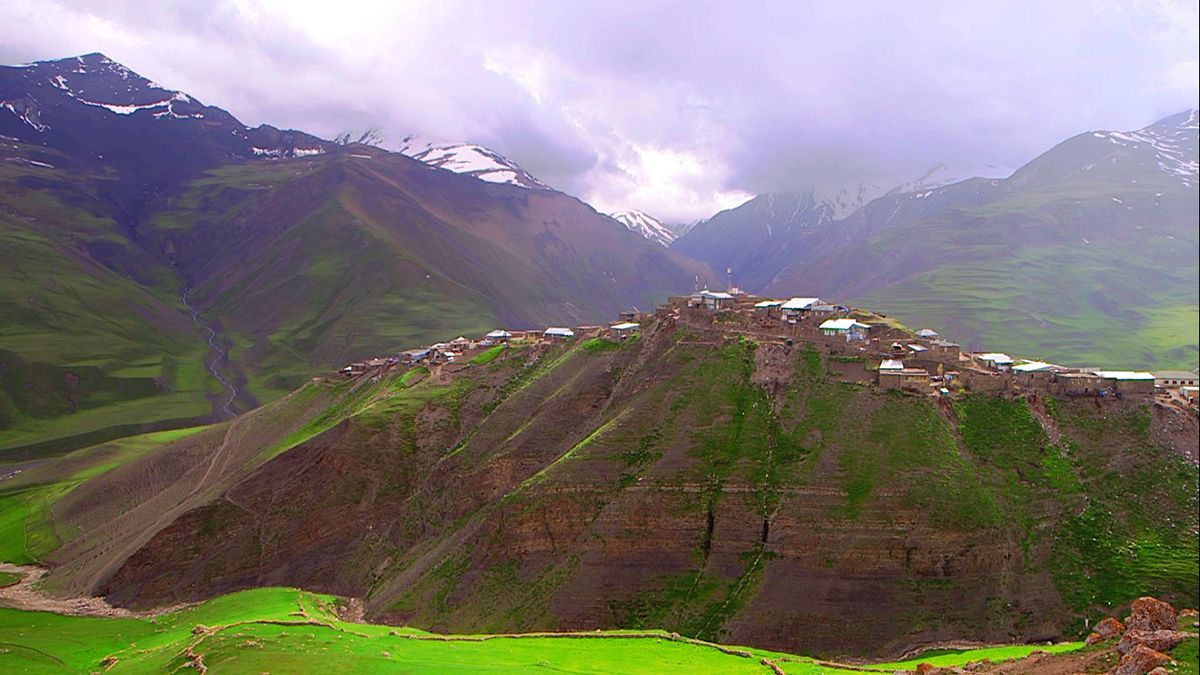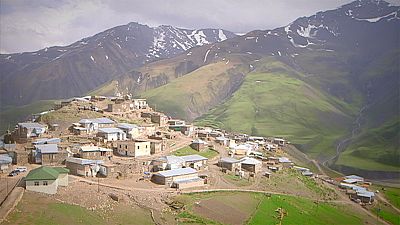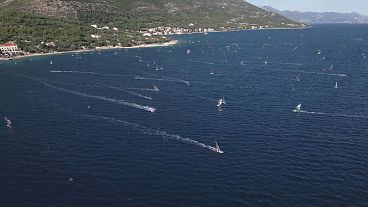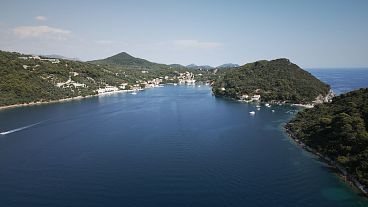As you set off on the road that leads to Khinalig, one of the highest and most remote mountain villages in the Caucasus, you know you are in for quite a treat.
Not long after leaving the northern city of Guba in Azerbaijan, you find yourself surrounded by breathtaking scenery. It seems the higher you climb, the more impressive the mountains, canyons and passes become.
And then, after driving for about 65 kilometres, there it is: the famous village perched on a hillside, where the local population of just over 2,000 even has its own language.
Archaeologists have found traces of a settlement that goes back more than 2,000 years, but the remains that can be seen today date back to between the 17th and 19th centuries.

The village, also known as Khinalug or Xinaliq, is actually not as remote as it used to be.
In the last 10 years the road has been widened and covered with asphalt, but in the past it was quite treacherous and Khinalig took a lot longer to reach.
The village is 2,300 metres above sea level and on a peak known locally as the “island among mountains”. The nearby mountains are called Qizilqaya, Shahdagh and Tufandagh.
This high up there are only shrubs and grass, but also the likes of mountain cabbages and carrots.
Khinalig has been declared a national park in its own right and it is forbidden to add to the 380 houses that already exist there.
The people are described as nomadic, looking after sheep and cattle, and carpet making is very popular for the women.
The villagers also look very different to other Azeris; they are not that tall but sturdy, and many have fair-coloured hair and grey or light blue eyes.

The traditional single-room houses, some of which date back between 200 and 300 years, are built out of local stones and are known as garadams.
The slopes in the village are very steep and all available space has been used. The roof of one house can be the terrace or yard of another.
Visitors can spend the night in the homes of local people or some travellers, such as eco-tourists, put up tents to sleep in.
There are no hotels or restaurants in Khinalig, which adds to the wonderful feeling of remoteness and getting away from it all. But it’s best to come prepared with enough food to last a visit.
The people here follow Shafi’i Sunni Islam, with numerous mosques in the village. In the past the local population had also followed Zoroastrianism.

Hiking around here is very popular and tours on horseback can be organised.
Watch out for the eagles that fly through the mountains and which have become a symbol of the region. The eagles can come very close to vehicles driving up through the valleys.
Local tourism guides say the best time to come is in the summer months as the snow can be quite heavy in winter.
As well as visiting the nooks and crannies of the village, visitors should take a look at the mosques, which are like large houses and don’t have minarets. The largest one, Joma, was renovated back in the 1960s.
The ancient graveyard is also interesting, where ancient markings and alphabets can be found, as well as the “Atashgah tower, which is thought to have been a structure designed for fire worshiping.

What’s amazing about Khinalig is that it has its own unique language, which no one else speaks or understands, and experts say it belongs to no known linguistic family.
Officials in the region of Guba say the first mention of the Khinalig language was in a book published in Vienna in 1895 called “Languages of the Caucasian Tribes” by R. Von Erckert.
The book attempts to decipher the grammar and the construction of phrases.
The Soviet-era Institute of Linguistics made a special mission to the village and tried to learn the language. An alphabet was created, consisting of 72 Latin-based letters.
The people of Khinalig are said to be related to the Shahdagh ethnic group and linked to what are known as the ancient 26 tribes of Caucasian Albania.

Local people refer to their village “Ketsh”, call themselves “Kettid” and their language “Ketsh mitsl”.
The name Khinalig has been used since the 1950s and is thought to be a reference to the colour of the surrounding rocks or from some name used by the tribe.
Some village elders say there actually used to be four different tribes in Khinalig, each with its own living quarters, and they spoke different variations of the Khinalig language.
There is even a local legend that Khinalig is linked to the story of Noah’s Ark and the floods: they say this is the place where he anchored and told everyone to leave the ark.
Local experts say shells and fossilised remains of fish can still be found in the area, proving that the land was once under water.




